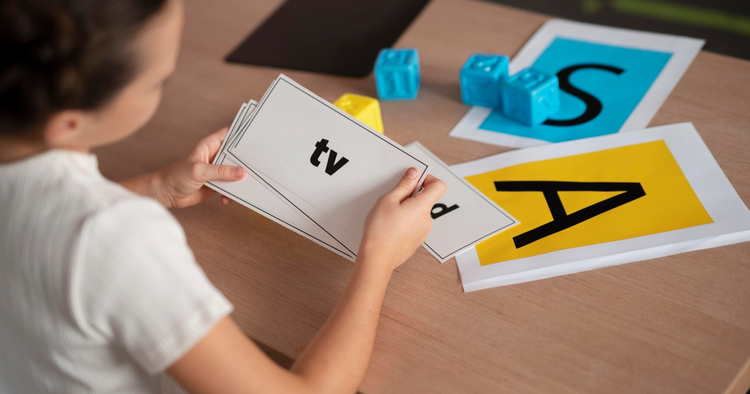Creating an inclusive and vibrant classroom environment is a cornerstone of effective ESL (English as a Second Language) teaching. Icebreakers serve as powerful tools to foster connections, encourage interaction, and establish a comfortable atmosphere among students of varying ages and proficiency levels. In this article, we'll explore a range of engaging icebreakers tailored to meet the diverse needs of ESL learners, promoting inclusivity and active participation.
1. Name Game
Student level: All levels
Lesson type: Group
Setting: In person / Online
Students introduce themselves using an adjective that starts with the same letter as their name (e.g., "Friendly Frank"). This activity aids in memorization and creates a memorable introduction experience.
Just have your students toss a ball to each other; each one says their name and then the name of the person they are tossing the ball to; no one can toss the ball back to the person who tossed it to them. This is a great game to play on the first day of class to help your students get to know each other.
You can also ditch the ball and have students say each other’s names if you’re teaching online.
This game isn’t terribly complicated, but it will get your students talking and help them all remember one another’s names!
2. Two Truths and a Lie
Student level: Intermediate/Advanced
Lesson type: Group or individual
Setting: In person / Online
An adaptable classic, where each student shares two true statements and one false statement about themselves. The rest of the class guesses which statement is the lie, encouraging interaction and language use.
The rules of this game, which you may have played before, are straightforward: each player provides three facts about themselves, two of which are true and one of which is false.
The object of the game is to guess which of the three statements is false, and the player who makes the most accurate guesses moves on to the next round.
This game is great because it can be adjusted to many different levels and because it allows students to practice speaking and listening while also learning about one another.
3. I’m Going on a Picnic
Student level: Intermediate
Lesson type: Group
Setting: In-person / Online
This game of repetition will have your students laughing uncontrollably while also testing their vocabulary and memory skills. To play, go around the circle and have each player say a picnic item in alphabetical order, adding to the list each time they play, and repeating the previous items.
For example, if the first player says, "I am going on a picnic and I am bringing apples," the second player might respond, "I am going on a picnic and I am bringing apples and a blanket," and the third player would respond, "I am going on a picnic and I am bringing apples, a blanket, and cake," and so on.
4. Four Corners
Student level: Beginner/Intermediate
Lesson type: Group
Setting: In person
If you’re looking for a listening comprehension game that incorporates movement, you can’t do better than this game.
In this game, you’ll ask students a question like “What’s your favorite food?” Then you’ll assign a different answer to each corner of the room, like noodles, pizza, burgers, and chicken.
Students will run to the corner of the room that corresponds with their answer.
You can have students choose the questions and possible answers for this game, too!
5. Sit Down If
Student level: All levels
Lesson type: Group
Setting: In person / Online
If you are in an Online Classroom, you can have students turn off their cameras or lower their hands instead of sitting down. The last person standing can be the next to make statements, or if your students are too young, you can continue to be the person making statements each round. This is an easy listening comprehension game to start the class. First, everyone stands. Next, the teacher (or an appointed student) starts making statements, like "Sit down if you have a younger sister" or "Sit down if you are wearing shorts."
6. Organize Yourselves
Student level: All levels
Lesson type: Group
Setting: In person
This game is best played in person with a group of students. Have them arrange themselves in a row according to height or birthday, but do not let them talk to each other. They will not gain much speaking practice in this game, but they will have to learn how to get along and interact with one another.
7. Riddle Game
Student level: Intermediate / Advanced
Lesson type: Group / Individual
Setting: In person / Online
This is a fun game that can be played in groups or individually. First, choose an animal category. Next, have each student or team come up with something in the category and three clues to help others guess it.
For example, if a student chose an elephant, they might say, "I am gray...I have big floppy ears...I have a long trunk."
The person who guesses correctly goes next. This is a great way to review concepts from class and cover basic vocabulary like shapes and colors.
Adapting for Different Levels
- Beginners: Simplify language and focus on basic vocabulary. Use visual aids and gestures to facilitate understanding.
- Intermediate: Encourage short conversations and more complex sentence structures.
- Advanced: Incorporate debates, discussions, or role-plays on thought-provoking topics to challenge language proficiency.
Implementation Tips
- Time Management: Allocate appropriate time for each activity, considering the complexity and language level.
- Pairing and Grouping: Mix students of different proficiency levels to encourage peer learning and support.
- Feedback and Reflection: Allow students to share their thoughts on the activities, promoting a reflective learning environment.
Conclusion
In an ESL classroom, icebreakers are not just about breaking the ice; they serve as catalysts for language acquisition, cultural understanding, and community building. By embracing diverse icebreaker activities tailored to different age groups and proficiency levels, ESL teachers can create an inclusive and engaging learning environment where language barriers dissolve, and confidence in English language skills flourishes.









